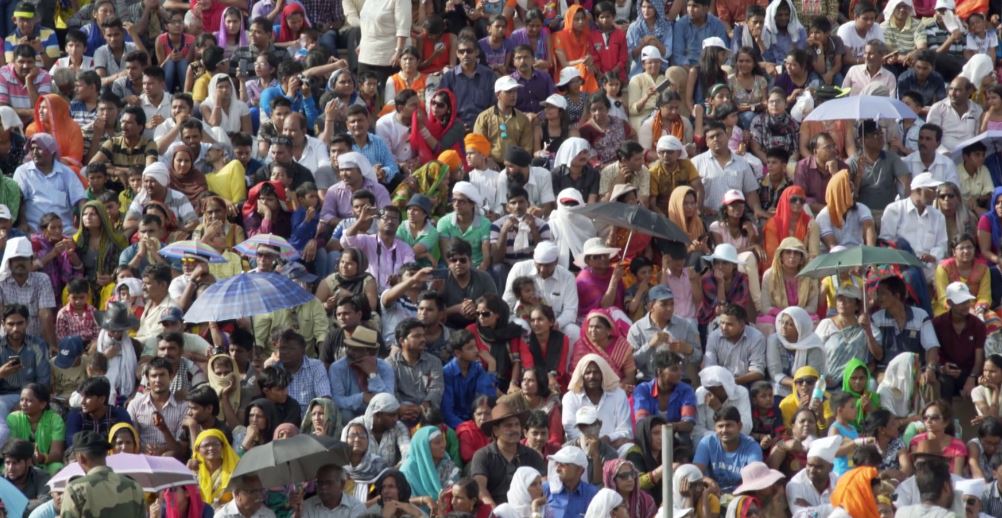Fake news in India and its Countermeasures | UPSC – IAS
Fake news in India refers to misinformation or disinformation in the country which is spread through word of mouth and traditional media and more recently through digital forms of communication such as – morphed images or edited videos, click-baits, motivated stories, hate speech, memes, unverified advertisements and social media propagated rumours etc.
Misinformation and fake news in India:-
- In India – Fake news, rumours, morphed images, click-baits, motivated stories, hate speech etc. spread virally through platforms like WhatsApp, Facebook, Twitter etc among 35 crore internet users in India. They target not only political figures, but also religious minorities and dissenting individuals, with propaganda rooted in domestic divisions and prejudices.
Consequences of fake news in India:-
- The consequences of such targeted misinformation range from riots, death threats to actual murders. In the past year, more than two dozen people have been lynched by mobs spurred by nothing more than rumours sent over WhatsApp. More recently, during the COVID-19 pandemic, closed messaging services were used to spread inaccurate information.
- Fake news spread through social media in the country has become a serious problem, with the potential of it resulting in mob violence, as was the case where at least 20 people were killed in 2018 as a result of misinformation circulated on social media.
Use of Deep fake:-
- The introduction and evolution of AI technology that is now capable of creating “deep fake” video content, using bots to micro-target populations with ads, and participate in human-like conversations, presents imminent future dangers of exponentially multiplying the current threats. Threats to democratic institutions and security landscape.
- Unregulated social media has empowered state and non-state actors with the means and know how to co-opt the media landscape in pursuance of illegal and terrorist activities, such as – radicalization, child pornography, human trafficking, selling narcotics etc. It has also allowed foreign and domestic actors to interfere in democratic functioning of nations through unidentified use of political advertisements during elections, spreading disinformation about government bodies etc.
Fake news in india | UPSC – IAS
Rasmus Kleis Nielsen, director at Reuters Institute for the Study of Journalism, thinks that “the problems of disinformation in a society like India might be more sophisticated and more challenging than they are in the West”.
The damage caused due to fake news on social media has increased due to the growth of the internet penetration in India, which has risen from 137 million internet users in 2012 to over 600 million in 2019.
WhatsApp Messenger
- India is the largest market for WhatsApp, with over 230 million users, and as a result it is one of the main platforms on which fake news is spread. One of the principal problems is that receivers believe anything sent to them over social media due to lack of awareness.
Recent Examples of Fake News in India | UPSC – IAS
- Misinformation related to coronavirus COVID-19 pandemic is in the form of social media messages related to home remedies that have not been verified, fake advisories and conspiracy theories. At least two people have been arrested for spreading fake news about the coronavirus pandemic.
- The Press Information Bureau brought out a fact check on 24 March 2020 that stories about a financial emergency being imposed in India are fake. To counteract this, over 400 Indian Scientists are working together to debunk false information about the virus, as of 14 April.
Citizenship (Amendment) Act 2019
- The Supreme Court of India asked the central government of India to consider “a plea for publicising aims, objectives and the benefits of the Citizenship Amendment Act (CAA) to weed out fake news that was being circulated on the issue.” The plea lawyer stated “I visited Jamia and Seelampur yesterday. 95% protesters do not know about the CAA. They feel the law will take back their citizenship. Miscreants are circulating fake news”.
- Around 5000 social media handles from Pakistan were part of “actively spreading fake and false propaganda” on CAA, some using “deep fake videos” in the process. 15,000 social media mediators worked overtime to identify fake news related to CAA from platforms such as Twitter, Facebook, TikTok and Helo.
- The Indian Ministry of External Affairs called out the Prime Minister of Malaysia for “factually inaccurate remarks” on the CAA. Bangalore Police Commissioner called for people not to believe fake news related to CAA while the Assam Police cautioned people to be careful while posting on the social media. Delhi Police was reported to be monitoring the social media for misinformation being spread related to violence at Jamia Millia Islamia in relation to CAA.
Kashmir
- Misinformation and disinformation related to Kashmir is widely prevalent. There have been multiple instances of pictures from the Syrian and the Iraqi civil wars being passed off as from the Kashmir conflict with the intention of fuelling unrest and backing insurgencies.
Other examples
- Imposters posing as army personnel on the social media have been called out by the Indian Army as false news and disinformation.
- 2013 Muzaffarnagar riots, which claimed over 60 lives and displaced thousands, was fueled by videos circulated on WhatsApp.
- As part of the 2016 Indian banknote demonetisation, India introduced a new 2,000-rupee currency note. Following this, multiple fake news reports about “spying technology” added in the banknotes went viral on WhatsApp and had to be dismissed by the government.
Countermeasures against Fake news | UPSC – IAS
Self-Regulation by the platforms: A self regulatory framework can help social media platforms fulfil their obligation to the public to limit spread of misinformation, extremism, hate speech, etc. and build trust with community members. Some steps that can be taken in this direction are- Following a set of Human Rights Principles for Content Moderation based on international human rights law: legality, necessity and proportionality, legitimacy, equality and non discrimination.
- Implementing measures that limit the
 virality of misleading content through limitations of some functionalities; opt-in features to receive group messages etc.
virality of misleading content through limitations of some functionalities; opt-in features to receive group messages etc. - Give users the alternative option, in an easy and intelligible manner, to decide on such issues as what information they want to see, and how they are targeted.
- Ensuring that automated tools, such as algorithmic ranking, do not intentionally, or unintentionally, unduly hinder access to election-related content and the availability of a diversity of viewpoints to users.
- Expanding the number of moderators and investing to improve quality of content review, particularly in at-risk countries, through development of sophisticated tools and technologies. For instance, YouTube, which along with the usage of AI , employs 10,000 people globally for monitoring and removal of objectionable content, took down 8 million videos in 2018 during a three-month period, 81% of which were removed automatically, and three-quarters of those clips never received a single view.
- Redefining the role of the Government: Governments should strive to protect the rights and freedoms of its citizens and mitigate the social costs of the social media by providing a strong democratic oversight.
Initiatives to Counter Fake News in India | UPSC – IAS
Various initiatives and practices have been started and adopted to curb the spread and impact of fake news. Some o them are as follows:-
- In November 2019, the Indian ministry of information and broadcasting planned to set up a FACT checking module to counter the circulation of fake news by continuous monitoring of online news sources and publicly visible social media posts.
- The module will work on the four principles of “Find, Assess, Create and Target” (FACT). The module will initially will be run by information service officers. Near the end of 2019, the Press Information Bureau (which comes under the Ministry of Information and Broadcasting) set up a fact-checking unit which would focus on verifying news related to the government.
- In some parts of India like Kannur in Kerala, the government conducted fake news classes in government schools. Some say the government should conduct more public-education initiatives to make the population more aware of fake news.
- Following over 30 killings linked to rumours spread over WhatsApp, WhatsApp introduced various measures to curb the spread of misinformation, which included limiting the number of people a message could be forwarded to as well as introducing a tip-line among other measures such as suspending accounts and sending cease-and-desist letters.
- WhatsApp also added a small tag, forwarded, to relevant messages. They also started a course for digital literacy and came out with full page advertisements in newspapers in multiple languages.
- Twitter has also taken action to curb the spread of fake news such as deleting accounts.
- In 2018, Google News launched a program to train 8000 journalists in seven official Indian languages including English. The program, Google’s largest training initiative in the world, would spread awareness of fake news and anti-misinformation practices such as fact-checking.
- Internet shutdowns are used by the government as a way to control social media rumours from spreading. Ideas such as linking Aadhaar to social media accounts has been suggested to the Supreme Court of India by the Attorney General.
Fact-checking in India has become a business, spurning the creation of fact-checking websites such as Boomlive, Alt News, Factly and SMHoaxSlayer.
Solutions that can stop fake news from spreading | UPSC – IAS
- Encouraging social media companies to define and periodically update content standards and enforcement guidelines: Participation from the different stakeholders, including civil society and law enforcement should be ensured while framing those guidelines and finalised standards and guidelines should be made public for transparency.
- Making social media platforms liable for obviously illegal content, if it is not removed within a certain period of being reported. There should also be a transparent and rapid redressal mechanism to be used in case of disagreements.
- Formulating Transparency requirements related to all platform’s core functions in the public information ecosystem: content moderation, content ranking, content targeting, and social influence building.
- Societal capacity building for better usage: Social media does not operate in a vacuum but in an already prevailing socio-economic context. Efforts to address prevailing issues in this context will increase the potential benefits from social media usage.
- Addressing the systemic issues in society: Online discussions simply mirror what is already happening in the society. There is thus a need to focus on addressing the prevalent issues of communalism, casteism, sexism, extremism, poor law and order etc. A strong enforcement of rule of law will allow greater freedom of expression online and weaken the need for regulation.
- Increasing accessibility for disadvantaged sections of society: Advantages of social media are restricted for many people to due illiteracy, language barriers and the digital divide in infrastructure between rural and urban areas. This must be addressed to promote inclusion and participation of all.
- Digital Literacy and Awareness: Responsibility for media literacy and appropriate and safe use of technology exists at several levels – family, school, community and government. Parents, carers and those working with young people are aware of the benefits and potential problems associated with media use. They should be encouraged to educate themselves about these topics and should be empowered to help young people set reasonable limits around media usage in a way that enhances their development & minimizes problematic use.




